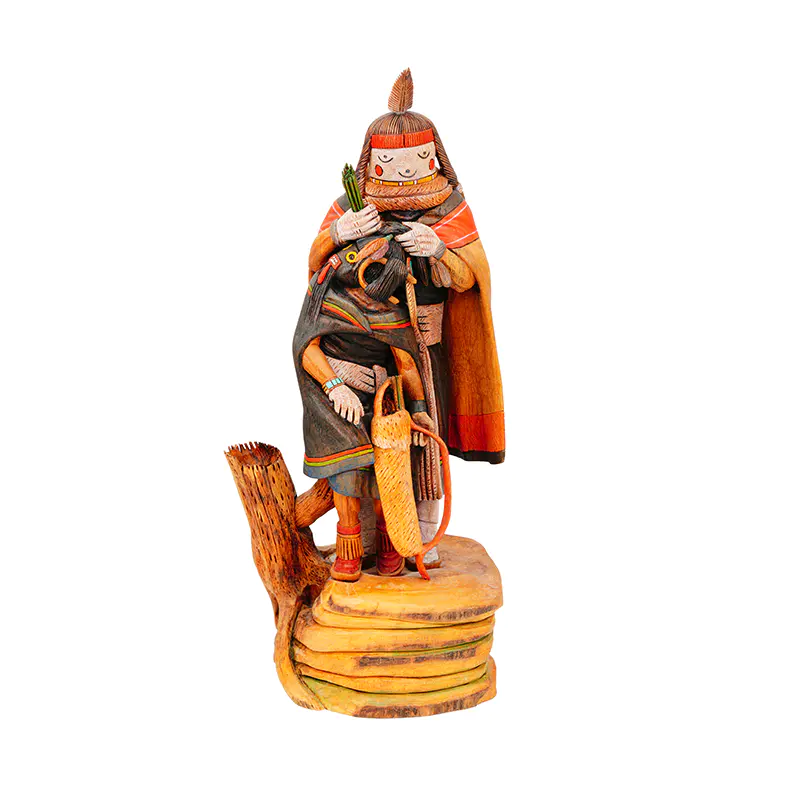Ivan Wytewa (Hopi, b. 1962)
Ivan Wytewa is a Hopi artist from the village of Bacavi, known for his katsina doll carvings and mixed media paintings. Traditional Hopi carving practices deeply influenced a nephew and student of renowned carver Tom Holmes, Wytewa. He has also collaborated with fellow artist Ronald Honyouti, assisting with figure-shaping while Honyouti completed detailed surface work. In addition to carving, Wytewa has explored painting, often focusing on vibrant depictions of Hopi katsina. His work reflects a strong commitment to Hopi cultural continuity, blending traditional forms with contemporary expression.
Wytewa, Ivan Woman Warrior Hopi Kachina
$3,800.00
Hahai-i Wuhti and Hé-é-e may appear together in ceremonies like Powamu or Pachavu because they represent two sides of protection within Hopi tradition. Hahai-i Wuhti embodies nurturing, guidance, and maternal care, while Hé-é-e stands for courage, defense, and action. As female-presenting kachinas, their presence together reflects balance—offering both wisdom and strength during times of renewal and ceremonial transition.
Dimensions: 13″ T X 6″ W x 6″ D
In Stock
Hahai-i Wuhti
A vibrant and vocal Hopi kachina, Hahai-i Wuhti represents a spirited grandmother figure. She appears in major ceremonies across all mesas and is known for her high-pitched voice, sharp demands, and protective nature. Often seen offering somiviki to children or acting as a wet nurse to the Water Serpents, she plays both nurturing and fearsome roles. Her doll, or tihsu, is traditionally given to Hopi infants and captive eagles. On Third Mesa, she’s recognized by her black shawl worn across her back and arms.
Hé-é-e (Hé’wuhti)
Hé-é-e, also known as the Warrior Maid, appears most often during Powamu, but her most powerful role is during the Pachavu ceremonies. She’s based on a traditional story about a young Hopi girl who saw enemies approaching the village while her mother was styling her hair. With one side still undone, the girl grabbed a bow, arrows, and quiver, and ran to warn the village. She held the line until the men returned, and from then on, she was remembered through this kachina figure.
In a ceremony, she’s shown with her hair partially done, wearing a scalp lock, and carrying the same weapons. She still plays a protective role. During Pachavu, she signals when the village must clear out for parts of the ceremony that happen in private. She also leads the final procession of kachinas into the village—loud, aggressive, and unmistakable.





